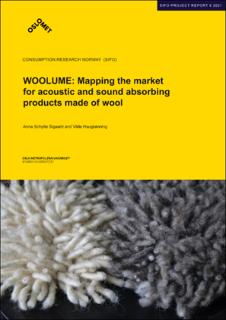Acoustic Performance of Sound Absorbing Materials Produced from Wool of Local Mountain Sheep
Katarzyna Kobiela-Mendrek, Marcin Bączek, Jan Broda, Monika Rom, Ingvild Espelien and Ingun Klepp
Abstract
Wool of mountain sheep, treated nowadays as a waste or troublesome byproduct of sheep husbandry, was used for the production of sound-absorbing materials. Felts of two different thicknesses were produced from loose fibres. Additionally, two types of yarn,ring-spun and core rug, were obtained. The yarns were used for the production of tufted fabric with cut and loop piles. During the examinations, basic parameters of the obtained materials were determined. Then, according to standard procedure with the use of impedance tube, the sound absorption coefficient was measured, and the noise reduction coefficient (NRC) was calculated. It was revealed that felt produced from coarse wool exhibits high porosity, and its sound-absorbing capacity is strongly related to the felt thickness. For thicker felt the NRC achieved0.4, which is comparable with the NRC of commercial ceiling tiles. It was shown that the crucial parameter influencing the sound absorption of the tufted fabrics was the pile height. For both types of yarns, when the height of the pile was increased from 12 to 16 mm, the NRC increased from 0.4 to 0.42. The manufactured materials made from local wool possess good absorption capacity, similar to commercial products usually made from more expensive wool types. The materials look nice and can be used for noise reduction as inner acoustic screens, panels, or carpets.
